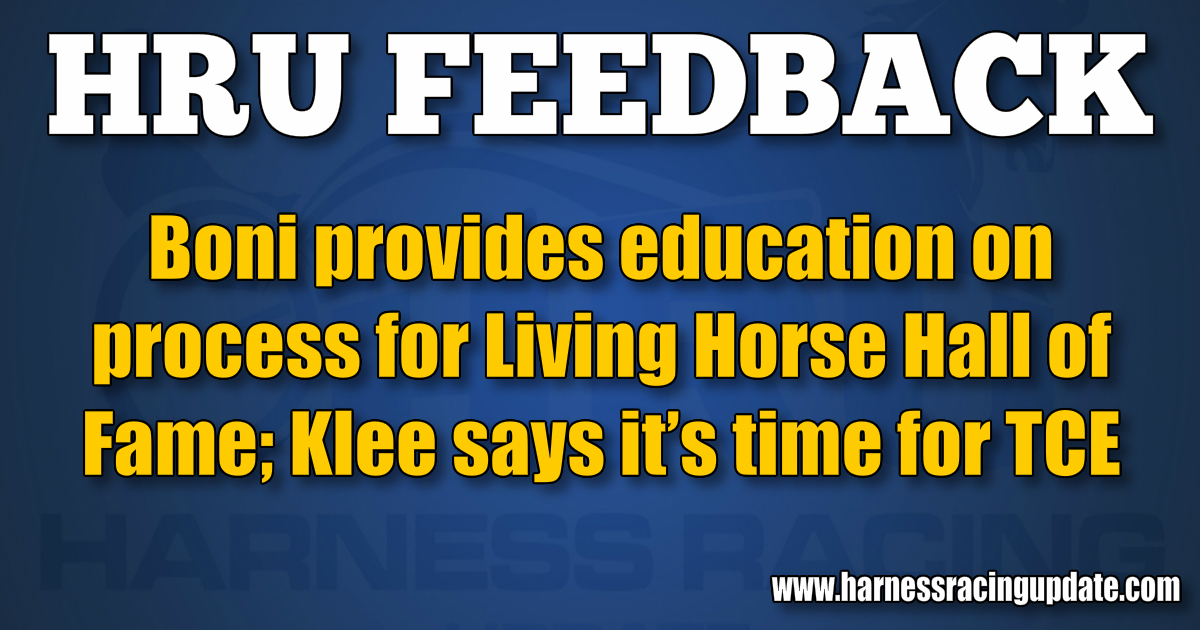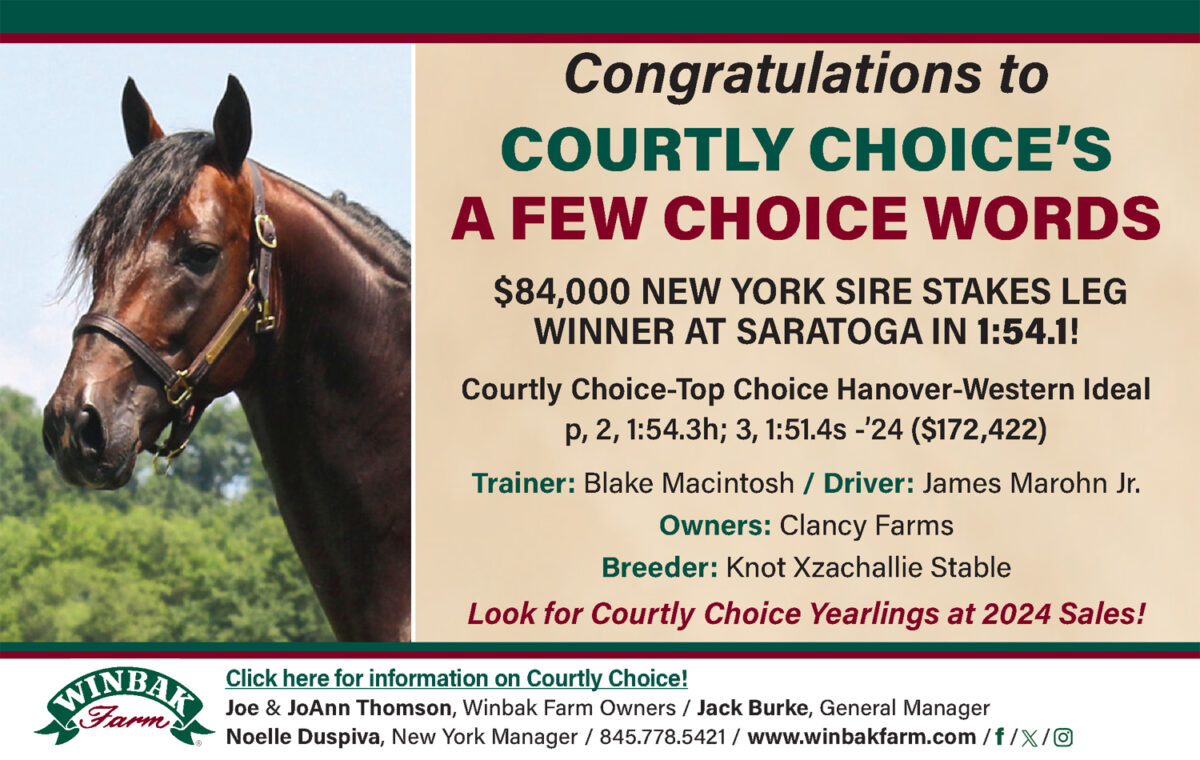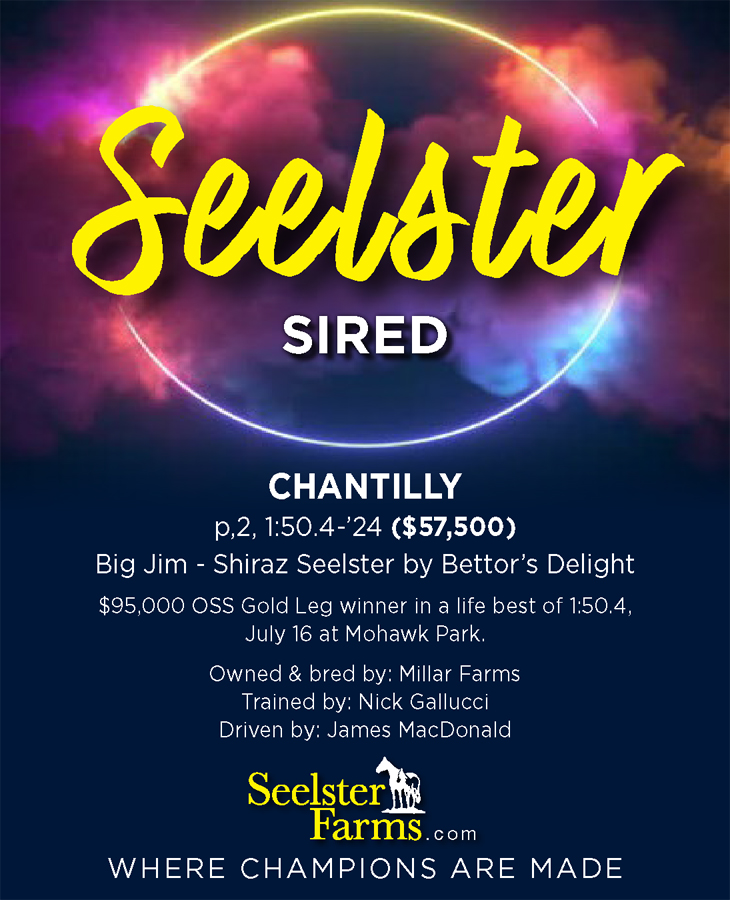

HRU Feedback (2021-01-03)
Boni responds to Sturman, provides education on process for Living Horse Hall of Fame
Reading Brett Sturman’s Dec. 28 column “Hall of Fame criteria for horses prone to missing the mark,” (full story here) I was struck by a number of inaccuracies and misrepresentations.
As a co-chairman of the Living Horse Hall of Fame Committee with Seth Rosenfeld, we feel it is important that we let the process be known and clarify any areas of question.
Any interested party can go here to easily find the Living Horse Hall of Fame election guidelines.
Brett spent three paragraphs bemoaning the fate of the brilliant DARLIN’S DELIGHT as not being eligible based on the numbers, when in fact she is, as her earnings of $2,901,926 far exceeds the necessary $2.5 million.
And for starters he highlighted MACH THREE as one that would not qualify, and this time he was correct, but only because the acknowledged sire of SOMEBEACHSOMEWHERE is deceased and for that alone would not be eligible for Living Horse Hall of Fame. Prior to his death MACH THREE was in fact on the list of eligible and was considered by virtue of his having sired over 100 winners of $200,000 or more.
Certain requirements have been established, however contrary to what was indicated in the Sturman column, for those notable horses that for whatever reasons do not meet the benchmarks there is clearly a provision where committee members can also nominate a racehorse or racemare or stallion that does not meet that criteria.
I don’t think anyone will have to worry about TALL DARK STRANGER making the ballot.
We feel that we have an exceptional committee, and we take the honor of induction into the Living Horse Hall of Fame very seriously.
In addition to Seth and myself, the other committee members are John Campbell, Tom Charters, Jerry Connors, Bob Heyden, Dean Hoffman, Mike Klau, Mark Loewe and Janet Terhune.
I may be partial, but that is a pretty damn good lineup of expertise and opinion, and amongst ourselves our often-discussed objective is that every horse that is nominated and inducted be deserving, drawing from a listing of 40 to 50 annually that meet the standards that have been set.
To that end, the number of inductees has been increased now to three each year, from two, and also with different measures for females. While there may be some deemed worthy that do not make it on a year-to-year basis, I can confidently say that any horse that makes the ballot and is eventually voted in would be considered to be one of the very elite.
It should also be noted that the final and most important step in the process, electing three inductees from the six candidates that appear on the ballot, is done by a vote of the Harness Racing Museum and Hall of Fame membership.
I read a column like this, and others of similar opinion, and I only ask why Brett didn’t think it was worthwhile to contact one of us and question the process directly and perhaps answer some of his questions.
Related to the column, I followed a number of the Facebook and Twitter comments questioning how certain horses, many on our base listing of 40-50, could not already be in the Hall of Fame. And then with some simple research I find that many of those making such definitive comments are not even members of the Hall of Fame, even for the minimal $35 membership that would have also granted them the opportunity to vote and have their voice heard where it counts most.
I hope this was helpful and, in many ways, educational. As a committee, we are easily accessible and always open to any suggestions of possible nominees, and in fact we look forward to that input.
As always, I thank you for your consideration and the opportunity to clarify a few of the apparent misconceptions regarding the Living Horse Hall of Fame
— Bob Boni / Secaucus, NJ
It’s time for TCE
As the horse racing industry reflects on 2020 once thing is certain, its landscape going forward in 2021 has forever been changed. Passage of the HISA (Horseracing Integrity and Safety Act) and criminal indictments have guaranteed that. Harness racing may or may not be in full control of its destiny. Past norms and business as usual no longer acceptable. The need to better monitor how stakeholders address issues inhouse going forward needs to be the norm and not the exception. The alternative is letting other interests control how harness racing monitors its’ business.
It seems a major point of contention is should the USTA take a leadership role in harness racing or simply be a record-keeping organization? The answer is not an easy one, but I think we can all agree that the USTA is our national governing body which licenses all trainers and asst. trainers who participate. Without a USTA license, with limited exception, you cannot participate in harness racing in the United States. It begs the question, what can the governing body of harness racing like the USTA do to influence and control our sport. The issuance and requirements to obtain and maintain a trainer or assistant trainer license is one of those issues.
This begs the question, what are the licensing requirements of trainers and assistant trainers and upon relicensing and how do they stay in good standing with the organization? In this respect, the USTA does play the ultimate role. In many professions, continuing education is mandatory to comply with laws or maintain membership in an association. However, that is not the case for a standardbred horse trainer. Once licensed, horse trainers are not required to maintain their license by participating in any formal update of recent rule changes or educational training. No ethical formal reminders of what constitutes a paper trainer, updated rules passed by the USTA, latest substances banned by the ARCI or RMTC, etc. Missteps that can be made which can cause you to lose your license or have it suspended. Terms of art like “trainer responsibility”, “paper trainer” or “24 hours vs 72 hours” are bandied about with the assumption that everyone knows the exact definition or when these changes went into effect. Instead, trainers and assistant trainers are left to figure it out on their own after licensing through on the job training, the Internet or backstretch banter. This may be sufficient for rigging or shoeing a horse, but does it address many of the recent issues raised by those who govern racing rules, PETA and federal prosecutors? The answer is a resounding no. Especially in and industry with an everchanging landscape like horse racing where penalties against trainers are common, rules and punishment are constantly changing and communication is vital. Instead of formally educating participants as to the do’s and don’ts and putting them on notice as to these requirements, the approach taken is more of a “gotcha game” to catch the bad ones after the damage is done versus preventative education. Thoroughbred trainers in New York including assistants are required to obtain at least four hours each year in equine health, welfare and safety as well as small business, ethical and humane resource topics. Not harness racing.
No one likes mandatory continuing education. As an attorney, nothing is more boring than sitting through a lecture on bankruptcy when you have never done a bankruptcy case and have no intention of doing one just to satisfy a licensing requirement. However, when it comes to the field I concentrate in or recent ethical hypotheticals I do see their value. In fields where having a license is based on skill sets not everyone in the general public can easily learn, continuing education can assure the public and regulatory bodies that their licensees are up to date on the latest rules and requirements of their profession. Harness racing needs to tailor courses for standardbred trainers to fit our practical needs before someone else does it for us.
The time has come for Trainer Continuing Education (TCE) as part of a standardbred trainer’s license renewal and it should be mandatory. The USTA should provide courses and require upon license renewal proof of these continuing education classes. This is something the USTA can do to take both a leadership role in harness racing and show the public that trainers are continuously being updated by leaders in the field as to their obligations and preconditions. Specific topics, hours per year, requirements based on length of licensees should not be burdensome. However, it should be enough to formally educate and show the public that maintaining a standardbred trainer’s license is more than a rubber stamp if you have not been suspended or committed a crime. Is this something that can be implemented overnight? The short answer is no. Changes to either the USTA Constitution, By Laws or Rules and Regulations to implement a continuing education requirement will most likely be needed but it must be done.
Will TCE stop the really bad apples if they want to break the rules? The answer is no. Bad apples are just bad apples. It doesn’t matter the profession. However, will it be a formal constant reminder year after year to those that have a license of the changes to the industry and what the ramifications are of bad actions. Will it make a licensee think twice before putting their name down as a trainer on a horse or do something different because they heard something in a continuing education class? To that, I would give an optimistic yes.
If there is one thing the passage of the HISA has taught us is that if the USTA and harness racing wants to be in control of our sport and tailor it to our individual needs it must take the initiative. Before rules are implemented as a result of the HISA or a racing jurisdiction sets the standard for continuing education for harness racing trainers not necessarily applicable to our needs the USTA needs to address it first. The alternative is someone else possibly doing it for them.
— Jonathan R. Klee, Esq. / Mineola, NY















